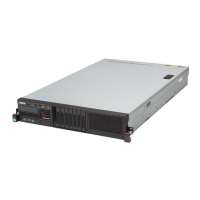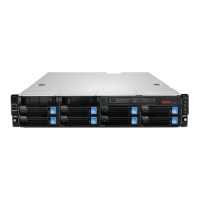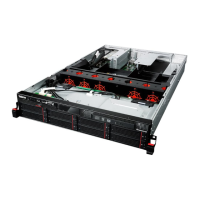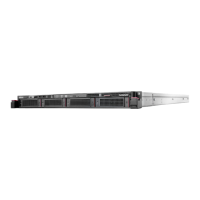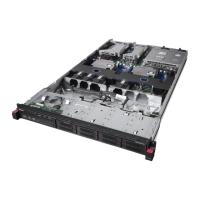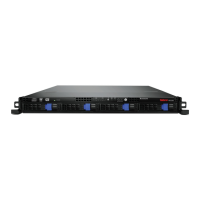LSI Corporation
- 99 -
12Gb/s MegaRAID SAS Software User Guide
March 2014
Chapter 5: The HII Configuration Utility
Managing Configurations
Table 22 Virtual Drive Creation Profile Options
Option Description
Drive Selection Criteria You need to select one of the various combinations of options that exist. If only one option is
possible, only one option appears.
Profile Parameters:
Virtual Drive Name Displays the name of the virtual drive.
RAID Level Displays the RAID level based on the profile selected. For example, if the profile selected is
Generic RAID 0, RAID 0 is displayed.
Virtual Drive Size Displays the amount of virtual drive storage space. By default, the maximum capacity available
for the virtual drive is displayed.
Power Save Mode Displays the selected Power Save Mode of the five available options: None, Auto, Max,
Max without Cache, and Controller Defined.
Strip Size Displays the strip element size for the virtual drive. Drive Stripping involves partitioning each
physical drive storage space in strips of the following sizes: 8 KB, 16 KB, 32 KB, 64 KB, 128 KB,
256 KB, 512 KB, 1 MB.
Read Policy Displays the read cache policy for the virtual drive. For any profile, if the drive is an SSD drive, the
No Read Ahead option is displayed. Otherwise, the Default option is displayed. The possible
options follow:
Default – A virtual drive property that indicates whether the default read policy is Read
Ahead or No Read Ahead.
Read Ahead – Permits the controller to read requested data and store the additional data
in cache memory, anticipating that the data is required soon.
No Read Ahead – Specifies that the controller does not use Read Ahead for the current
virtual drive.
Write Policy Displays the write cache policy for the virtual drive. For any profile, if the drive is an SSD drive,
the Write Through option is displayed. Otherwise, the Always Write Back option is displayed.
The possible options follow:
Default – A virtual drive property that indicates whether the default write policy is Write
Through or Write Back.
Write Through – Eliminates the risk of losing cached data in case of power failure.
However, it might result in slower performance.
Write Back with BBU – In Write-Back Caching mode, the controller sends a data transfer
completion signal to the host when the controller cache has received all of the data in a
drive write transaction. Data is written to the drive subsystem in accordance with policies
set up by the controller. These policies include the amount of dirty/clean cache lines, the
number of cache lines available, and elapsed time from the last cache flush.
Force Write Back – A data transfer completion signal is sent o the host when the controller
cache has received all of the data in a transaction.
I/O Policy Displays the Input/Output policy for the virtual drive. For any profile, if the drive is an SSD drive,
the Direct option is displayed. The possible options follow:
Default – A virtual drive property that indicates whether the default I/O policy is Direct IO
or Cached IO.
Direct IO – Data reads are not buffered in the cache memory. Data is transferred to the
cache and the host concurrently. If the same data block is read again, it comes from the
cache memory. (The I/O policy applies to reads on a specific virtual drive. It does not affect
the read ahead cache.)
Cached IO – All reads are buffered in cache.
Access Policy The access policy for the virtual drive. The options are Read/Write and Read Only.

